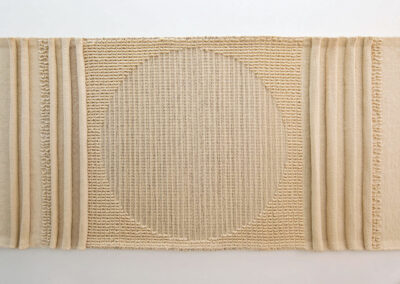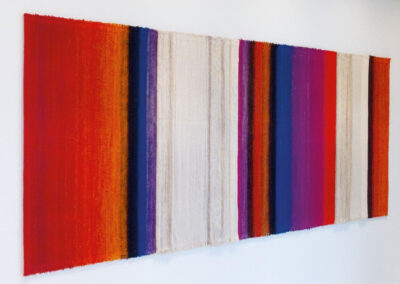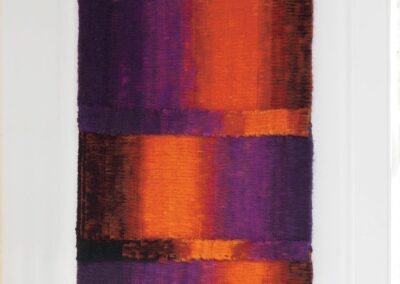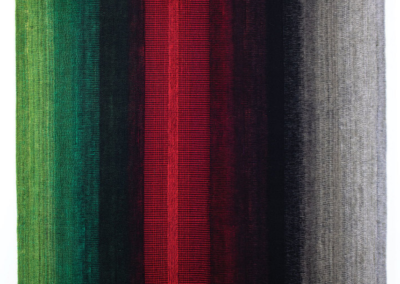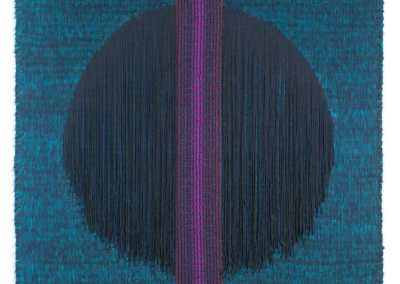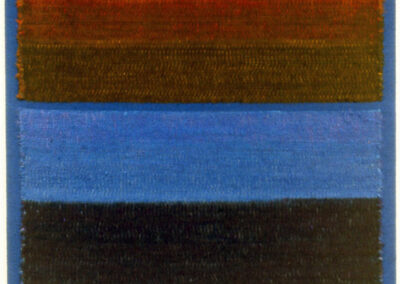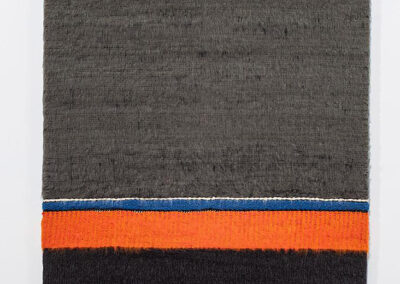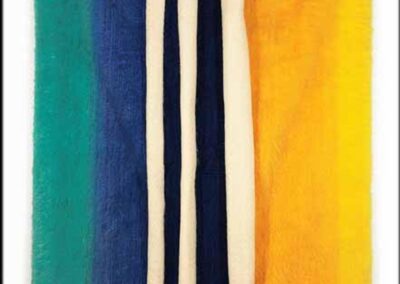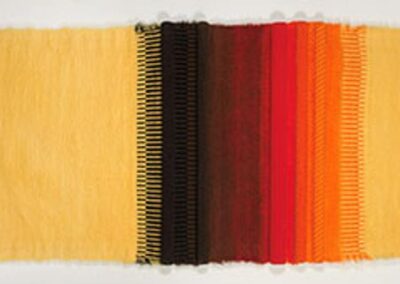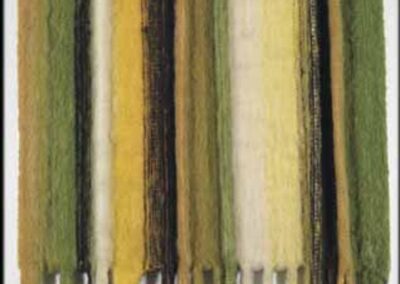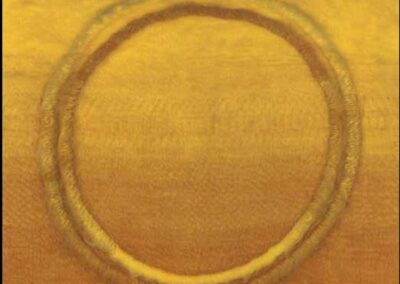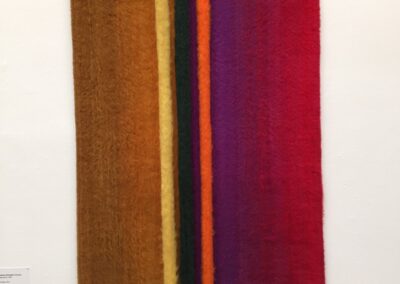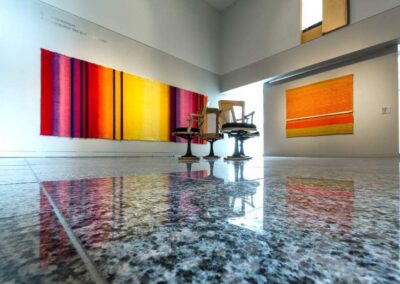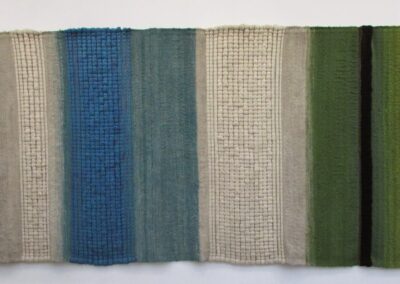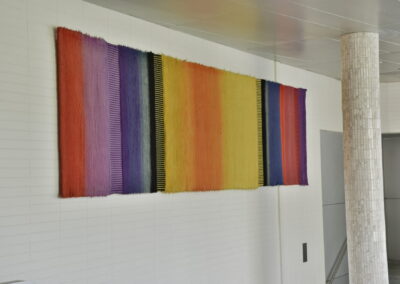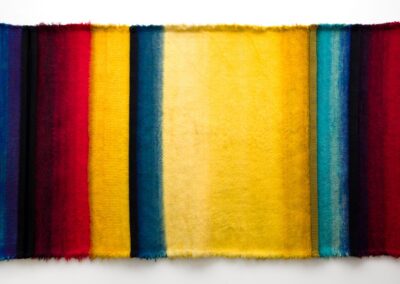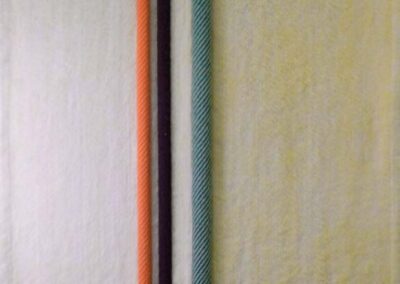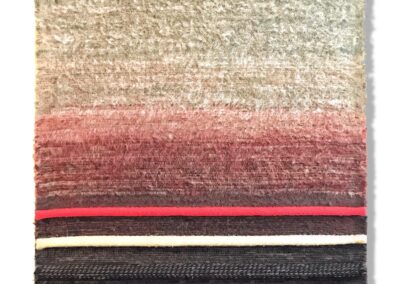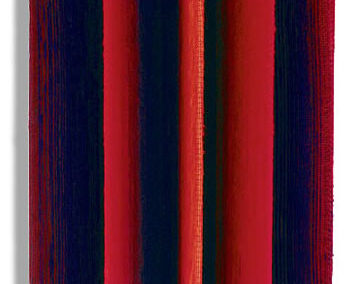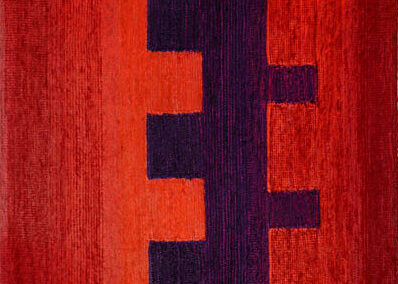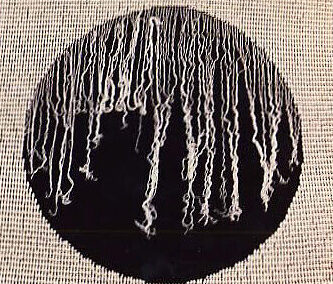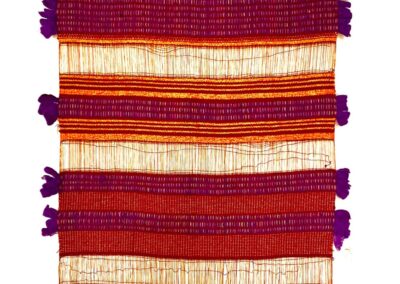Our next Artist You Need To Know is Mariette Rousseau-Vermette (1926 – 2006).
An internationally renowned artist (who worked in paint as well as weaving) Rousseau-Vermette was a trailblazer in the arena of textile art. Many of her monumental ‘colour field’ pieces employ an element of bas-relief and act as sculptures within a space. Geometric and abstract forms and an iteration of modernism in fabric are common themes in many of her artworks. Rousseau-Vermette also would “incorporate unconventional materials into her sculptural works, such as fiber optics and fur, supported by woolen threads and wefts. She continually renewed the poetic meaning of her work by marrying the techniques and aspirations of the hour, thus transcending traditional tapestry. The integration of fiber optics in particular… led her to new and very autonomous artistic definitions.” (from here)
Born in Trois-Pistoles, Québec, Mariette Rousseau-Vermette studied at the École des beaux-arts du Québec (1944-1948) as well as at the Oakland College of Arts and Crafts in California (1948-1949). At the latter, she worked with Dorothy Liebes who has been described as the “mother of modern weaving.” Between 1952 and 1968 Rousseau-Vermette frequently visited Europe and Asia which only expanded her skills and knowledge around contemporary techniques in textile art.
During her career (her most active period was from 1957 to 2002) Rousseau-Vermette earned a number of prizes in both Québec and internationally. Besides her artistic practice she was also very involved with the larger artistic community, serving on a number of juries and boards as well as teaching. Notably, Rousseau-Vermette was head of the Fibre program at The Banff Centre from 1979 to 1985.
She was part of the New Tapestry movement, which emerged in the mid-1960s, with the agenda of having textile arts recognized as an “autonomous art, no longer subordinate to painting. Weaving artists, often multidisciplinary, renew weaving, mix techniques and mediums, with the major concern of the specificity of the material, whether it is made up of synthetic or natural, animal or vegetable fibres, in order to exploit its plastic resources.”(from here)
Rousseau-Vermette has exhibited her works in Canada and the United States, in several European countries and in Japan. Her tapestries are part of many major public and private collections, including the Metropolitan Museum of New York, Chicago Art Institute, Kyoto Museum of Modern Art, National Gallery of Canada, National Museum of Fine Arts of Québec and the Montréal Museum of Contemporary Art. She was a Fellow of the Royal Canadian Academy of Arts (RCA), an Officer of the Order of Canada and was awarded the Certificate of Honour from the Canadian Conference of the Arts.
“Working with noble materials, be they old or new, permits an evolution to unite tradition with high technology. Scientific discoveries permit me to explore new fields of research. Nature has been a tremendous influence on me since childhood, a great source of enthusiasm and energy. My goal is to create a harmony between light, color, the richness of the materials and the environments where my works are situated. What a privilege to have chosen a form of expression that is so passionate and without limits.” (from here)
Mariette Rousseau-Vermette has also been recognized for the production of numerous works for the public sphere: her stage curtains have been installed at sites such as the Maisonneuve Theater at Place des Arts in Montréal, the National Arts Center in Ottawa, and the John F. Kennedy Center for the Performing Arts in Washington.
A short video about the artist and her work can be enjoyed here, produced by Marie-Hélène Lépine to mark a retrospective of the life and legacy of Mariette Rousseau-Vermette – and her husband ceramicist Claude Vermette (1930-2006). In response to that same exhibition, and speaking about the importance of his parents’ work both artistically and as part of the larger cultural and historical narrative of Québec, their son Marc Vermette argued that the tendency to dismiss their work as solely “decorative art is a mistake….“There is a nuance to be made. What my parents did is as much decorative art as what Michelangelo did. And what they were doing was respectful of the community, whether it was a hospital, a courthouse or a subway.””
“Through the accuracy of their composition and the richness of their chromatic nuances, these works brilliantly bear witness to the remarkable mastery of the artist. Her tapestries, true works of art as such, transcend the usual boundaries of decorative arts or design, always oscillating between traditional art form and radical proposal. The art of Mariette Rousseau-Vermette is resolutely contemporary and timeless and carries with it a social dimension thanks to the accessibility of her works in public places.” (from Galerie Bernard)
Mariette Rousseau-Vermette died in Montréal in 2006, leaving behind an impressive number of pieces – over 600 works – spanning her life and career.

